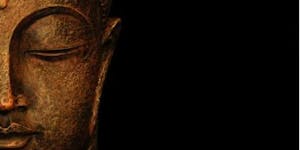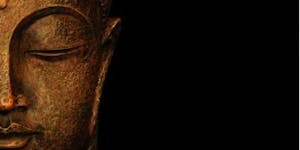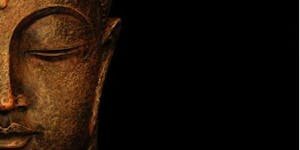Our days seem to be ruled by disorder and chaos. Our culture is one in which we are constantly busy in the search of becoming and being something other, continuously moving away from the present and away from ourselves in search of something better.
The world around us seems to be coming apart, and yet there is a marked sense of creation and emergent potential. All around us we see the effects of change, based on an evolution of values, tastes and desires.
Navigating this chaos and disorder can be overwhelming. Every time we think we have made progress or found a firm footing, the ground underneath us changes and moves. At one time the world changed slowly, generation after generation living much the same. Now things seem to change by the days and weeks with no 'catching up' in sight. In an effort to be more present in our lives, we struggle against ourselves and find time slipping away. No matter how much we fight against the tides of change, there is nothing to hold onto and all we are left with is fear and uncertainty about the future, our future, the future of the world and the future of humanity. In the face of change and disorder, what will we, it, and I become?
In Tibetan, we find this word bardo (Tib. བར་དོ་), which is often translated as intermediate state. Usually we talk about the bardo as the transition state between this life and the next, the liminal space of the afterlife. The bardo is an in-between state, a threshold between one state and the next. In a sense, we can understand the bardo as a doorway, in which we cross over from one life into the next. We let go of the old world, the one that we knew, and step into the new and unseen.
As a threshold, the bardo represents a liminal state in which subliminal conditioning creates our experience. This in-between state of the afterlife is simply the mind experiencing itself, or the mind experiencing its appearances. Much like a dream, we have little control over what is appearing to the mind in the bardo. Taking these appearances as our reality, we get caught up in the throes of mind and end up in a powerless and fearful state. Powerless because we have no control.
Having not trained in understanding how the mind works and how the contents of our experience are not in fact the 'self', we have no choice but to suffer the bardo. In this case, we will desparately be looking for a way out, not being particularly intentional about the conditions or motivations for our next life or the next form our life takes.
The bardo is commonly understood this way in Tibetan Buddhism, but there are actually six bardos (or liminal spaces) that we can experience: 1) the liminal space of this life (from birth to death), 2) the liminal space of dreams, 3) the liminal space of meditative absorption, 4) the liminal space of dying (from last breath to dawning of luminosity), 5) the liminal space of the luminous true nature of reality, 6) the liminal space of becoming (taking on new life form).
The essence of the bardo is this liminal, in-between state; between birth and death, waking and sleeping, inhaling and exhaling, destruction and creation, becoming and being. If you take a close look at time, you will find time itself is liminal space, between one moment and then next. As we learn to spend time in this liminal state, the bardo of the ever-present reality, we have an opportunity to break free from the machinations of mind and our experience. We have an opportunity to encounter timelessness, the eternal now of the continuously unfolding present.
In this liminal state of lucid, open presence, you experience the body, but know you are not the body. If your body changes somehow, 'you' don't change with it. There is some aspect of 'you' that is not your body. You experience sensations, but know an aspect of awareness that is not those sensations. Sensations are an object of your awareness. You might notice your perception of things, but know you are not your perception. You encounter thoughts and ideas, but know you are not your thoughts and ideas. You encounter the five senses, but know you are not those experiences of the five senses.
As lucid, open presence, you witness the contents of your experience, but know 'you' are not the contents of your experience. Amidst a sea of change, you are discovering the ground of being. But the real question is, who is this 'you'? If you look for it, where can you find it? Any chance to grab hold of this elusive 'self' results in not finding anything to hold onto. The mind as clear awareness is like water running through your fingers, there is an experience of mind but nothing to hold onto.
When we have certainty that there is nothing to find, nothing to hold onto, nothing to call 'our own', then we simply rest with that ever-present clear awareness. This is the ground from which we can reorient ourselves and choose our way forward. No longer overwhelmed by the subliminal contents appearing in your experience, you are able to respond to the ever unfolding reality rather than react out of habits and conditioning. This ever-present awareness is a vehicle for navigating the bardo of this life, the bardo of death, and the bardo of this moment. It is the basis for participating in the creation of the world, of dancing in the eternal now between the world falling apart around us and the one emerging through our individual and collective actions.
There is no awakening within the bounds of time. We awaken to eternally present clear awareness in the luminous liminal space of the true nature of reality. Furthermore, there is no one who is awakened. There is only lucid, open presence on the threshold of being, in which there is a perpetual letting go and stepping into.
This is how to navigate life and death.



